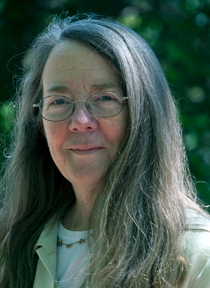Skidmore receives $353K from NSF for research on memory

Mary Ann Foley
Skidmore has received a grant of $353,000 from the National Science Foundation to examine the basic mechanisms that contribute to the effects of imagery on memory.
Professor Mary Ann Foley, a cognitive psychologist who has studied memory for nearly 30 years, is directing the three-year NSF project supported by the Division of Behavioral and Cognitive Sciences and titled "RUI: Guided Imagery and Memory Errors: Identifying Basic Mechanisms by Testing the Effects of Script Author and Imagery Content." She hopes to contribute to the theoretical understanding of "striking discrepancies" in reports on the effects of imagery on remembering. In the process, her research will have implications for debates about the use of guided imagery in applied settings.
Research shows that guided imagery (for example, asking people to visualize a scene in a park in a particular way) may lead people to report aspects of events that never occurred or to report entire episodes that were only experienced in thought. How does guided imagery result in these memory errors? Is the act of generating an image the culprit? Is it the vividness of the images? Or is it possible that the way in which the images are induced is crucial for producing the deleterious effects on memory? Foley's research project investigates these kinds of questions.
She explained, "Memory and imagination has always been a topic of interest to me." The grant-funded project represents a new level of work that builds upon her earlier research on the relationship between memory and imagination. Her earlier research on memory included work with small children, and children's memory confusion was the subject of her 2001 Moseley Faculty Research Lecture at Skidmore.
More recently, in collaboration with Skidmore students and graduates, she has completed research with adults, identifying conditions that lead to reductions in memory confusions. Foley expects that the new research findings will speak to conflicting patterns in the literature on the effects of imagery on memory, refine theories intended to explain the positive or negative effects of imagery, and invite researchers to conceptualize questions about imagery and memory in new ways.
Her previous research and teaching innovations were supported by earlier NSF grants. She has received NSF grants in support of the enhancement of an undergraduate laboratory facility and in support of Undergraduate Summer Research Programs (a collaborative effort with H. Foley). By way of her appointment to the Class of 1948 Chair for Excellence in Teaching, the Class of 1948 also supported her efforts to lay the groundwork for this new NSF grant.
The new grant is under the auspices of the NSF's Research at Undergraduate Institutions (RUI) Program. Funds from the grant will support the several kinds of research experiences for undergraduates. These undergraduate research interns will be involved in all stages of the research process. Funds also provide support for a postdoctoral fellow to further his or her theoretical knowledge and research skills while exploring alternative models for balancing and integrating undergraduate teaching and research. Through lectures and panel discussions open to the campus community and beyond, this research will highlight beneficial intersections between science and society.
For Foley, this grant "is a way for me to integrate three of the loves of my professional life: my research on memory and in particular, the effects of imagination on remembering; my commitment to finding ways to support undergraduate research within my teaching and research; and my commitment to mentoring faculty colleagues who are soon to start (or have recently started) their academic appointments. NSF, particularly through its RUI Program, provides a great opportunity for me to integrate these important dimensions of my professional life."
Foley knows the value of NSF research support from personal experience. A graduate of Nazareth College, she returned to her alma mater early in her academic career and received one of the very first RUI grants awarded by the NSF. She explained, "The grant supported my first few years of research at Skidmore, allowing me to study children's memory confusions related to imaginations. Grant funds supported undergraduate research for students at Skidmore, Union, and Nazareth colleges, and led to publications in research journals including student co-authors. For me, the circle of influence keeps expanding and my intellectual family tree continues growing."


